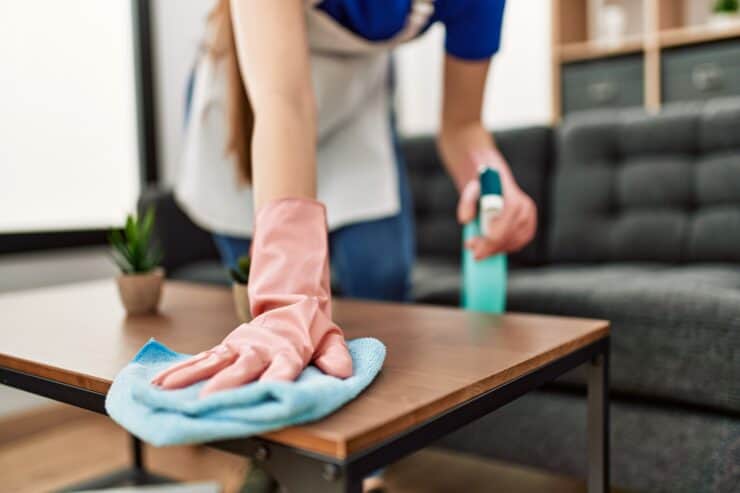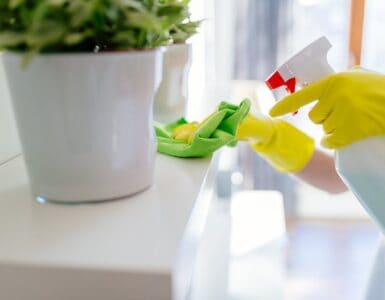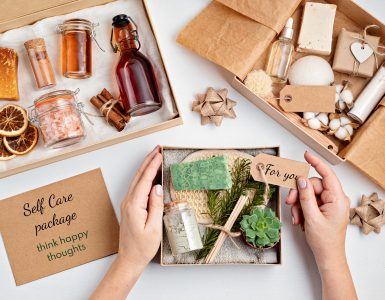The kitchen might look clean because of the aromas emanating from perfected recipes and great food; they serve as quite the distraction. Because of this, we tend to forget that it also gets dirty quickly and should be cleaned daily, which can be daunting. For this to be sustainable, you need the best cleaning products, which should be effective and accessible.
Here, I list different categories of kitchen cleaning products (link to Cleaning Supplies List – Stocking Up On Must-Have Cleaning Supplies) and how they get the cleaning job done. With my suggestions, you should be able to formulate a cleaning supply list that suits your cleaning process and needs.
We will explore ways to remove dirt from food preparation surfaces in the kitchen, like counters, dishes, pans, pots, cutting boards, knives, utensils, pots and pans.
Identifying Functional Kitchen Cleaning Products
Before choosing what products to use, we need to first take a look at what they are going to be used for. These are some considerations you should keep in mind.
They Should Serve the Intended Purpose
While an all-purpose cleaner will care for most of your kitchen needs, some surfaces and appliances need special attention. You can introduce kitchen cleaning products that serve specific purposes as the need arises.
Consider the type of surfaces you have and their endurance level against wear and tear as you pick your cleaning products.
They Should Be Food Safe
A great number of foods are eaten raw, so if your cleaning product has chemical properties that can leach into the food, it might cause health problems. Check out the ingredients and determine if any part of the cleaner is not food-safe before you use it in your kitchen.
Sanitizing Capacity
The kitchen is exposed to microbes like E. coli, salmonella and Listeria monocytogenes. Cleaning products can dislodge them from food, surfaces and dirty hands so your family is safe from illnesses. Many cleaning agents will sanitize using bleach, but others use natural sanitizers like nitric acid salt and vinegar solutions.
Versatility
All-purpose cleaners can significantly reduce the number of items on your cleaning supplies list, making it easy to assemble. The more services you can get from a single product, the less you spend on kitchen cleaning products, and the faster you can get the job done.
That being said, some situations demand specific cleaning products designed to handle specific functions.
Surface Friendliness
Read the instructions on the package to confirm if the product can be applied on the surface in question. Some chemicals are too strong for the intended surface, while others are too abrasive and might damage your wooden cabinets, walls and floors, so they are replaced with better-suited cleaners.
The kitchen is constantly exposed to ever-present contamination and pathogens such as E. coli spores. Add this to the looming possibility of spillage and litter as you prepare meals, then you will realize the need to clean the kitchen repeatedly.
My top budget cleaning products
Here are some cleaning products I feel you must include in your cleaning kit to maintain a healthy kitchen without spending a fortune.
1. Dishwasher Detergents
These are essential cleaning products because none of us likes the process of cleaning up after savoring our favorite meal. Dishwasher performance is highly dependent on your dish soap. You don’t want to deal with soap scum, cloudy glasses, and foods that stick on after a wash cycle because you compromised when it came to your cleaning supplies. The detergents clean the gunk off your dirty dishes so that you don’t have to hand wash them.
Dishwasher detergents come in the form of tablets and powder or liquid forms. These multipurpose house cleaning supplies are designed to leave your silverware shiny as new and remove dirty spots. They should constitute a significant part of your cleaning checklist if you have a dishwasher.
2. Microfiber Cloth Cleaner
These cleaning cloths come with very thin fibers, which make them quite absorbent. They are great for wiping spills and pulling up dirt and grease. They can be used to wipe appliances and countertops, remove grime and grease, and polish or shine surfaces. They are safe for stainless steel surfaces because their soft nature ensures they don’t scratch them.
3. Kitchen Sanitizing Products
The right kitchen sanitizing products eliminate viruses and bacteria from kitchen sinks, countertops and floors. The aim is to reduce the concentration of bacteria and other pathogens on food-contact surfaces to a safe level that inhibits illnesses. Sanitizers kill living organisms, so the ideal sanitizing frequency depends on the kitchen’s exposure to these microbes.
Sanitizers are typically cleaning chemical agents like chlorine bleach or hydrogen peroxide that can be packaged in a spray bottle so that they reach hidden spots to facilitate deep cleaning. These detergents are corrosive and produce harsh fumes, so they should be wiped off once their work is done.
Distilled vinegar has sanitizing properties and should be included in your kitchen cleaning product list as a natural cleaning solution.
4. Rinse Aid
This cleaning tool acts as a surfactant, lowering the surface tension of water so that it easily slides off dishes in the dishwasher. It hastens drying while mitigating water spots, especially where there is hard water. The all-purpose cleaner prevents water streaking and spotting while ensuring there is no scale build-up on your cutlery. It is dispensed as a drying agent at the end of the rinsing cycle.
Rinse aids can be made from natural products like white vinegar, hydrogen peroxide, or citric acid powder if the cleaning business is too financially demanding. Your kitchen and utensils will not smell, streak or mark. They come in handy, especially when you are dealing with hard water.
5. Hand Soap
Your hands perform myriad activities in the kitchen, from slicing onions, kneading dough, and handling spices to scrubbing grimy pots. They retain smells and dirt that should be taken care of because you are handling food.
Hand soaps are essential cleaning supplies for the kitchen, and you should find brands that can stand up against odors from pungent foods without being harsh on the skin. Some handwashes have additives that are not food safe, so it’s important to look at the ingredients before purchasing handwash. They are kept close to the kitchen sink for easy access.
They are different from dish soap because they are formulated to have the optimal pH for the skin and have conditioning agents to keep the skin soft.
6. Degreaser
Many dishes are prepared using oil which leaves behind odors and food particles. Grease solidifies, enabling the build-up of grime and dirt on cookware, bakeware, and worktops.
A degreaser enables you to combat this build-up as it can lift grease from these kitchen surfaces. A good degreaser can easily remove fingerprints, oils and fluids that might be corrosive to your kitchen utensils and surfaces. Some degreasers even have deodorizing and disinfecting properties for safe and hospitable kitchens.
Natural degreasers can be made using common household ingredients like vinegar and baking soda. Vinegar is a sanitizer capable of removing stains and grease, while baking soda is a gentle abrasive that helps remove stubborn stains and deodorizes. A mixture of the two makes the ideal degreaser for your kitchen surfaces.
7. All–Purpose Kitchen Cleaning Products
All-in-one tablets function as dishwasher detergents, sanitizers and rinsing aids. They eliminate the need to use separate products to clean the kitchen. An all-purpose cleaner can be used to clean kitchens and bathrooms. They can be applied to floors, furniture, surfaces, and walls, handling any home cleaning task thrown at them.
8. Kitchen Floor Cleaner
Kitchen floors are diverse, ranging from tiles, linoleum, wood and laminate, so it is important to know the cleaning solution that will be appropriate for your type of floor. Regardless of the floor type, it should be cleaned daily to prevent the build-up of dirt and grime. They are vulnerable to crumbs, pet hair and a lot of dirt tracked in by dirty shoes.
Use a brush with soft bristles to scrub between floor tiles with grout lines. A nonabrasive cleaning product should suffice to clean the kitchen floor. Small doses of vinegar and water should do the trick. You can apply the solution using a damp cleaning cloth so you don’t scratch the surface or leave any markings.
Where the scum is too much, it can be removed using a microfiber cloth and baking soda paste.
The cleaning process is impossible without cleaning products that enable you to disinfect surfaces that come into contact with food, like the worktop, kitchen oven, hob, cutlery, and food preparation machinery. Once you have the right tools, the cleaning process becomes easy and seamless.














